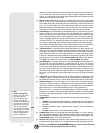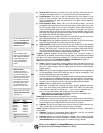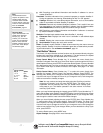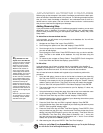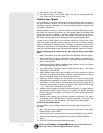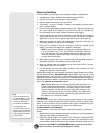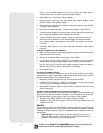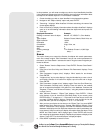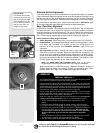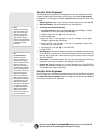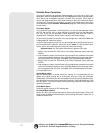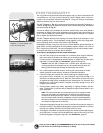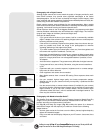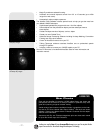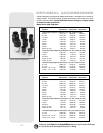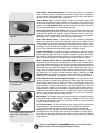
Alternate Alt/Az Alignments
If you would rather set up your telescope without using automatic alignment, AutoStar
II offers alternative alignment methods for both alt/az and equatorial mounting. During
the One-Star and Two-Star alt/az alignment procedures, you will (unlike the Automatic
and Easy alignment procedures) manually place the telescope in the home position.
The procedures for equatorial (polar) alignment are discussed in
APPENDIX A, page
52; the three alternative alt/az alignment methods are discussed below.
Easy (Two-Star) Alignment
In this method, AutoStar II automatically sets the home position, and also automati-
cally picks two stars from its libraries for alignment. During the procedure, AutoStar II
slews the telescope to a first alignment star. The user is asked to verify that the tele-
scope is pointed at the chosen star and then prompted to center the star in the eye-
piece. The process is repeated with a second star to complete the alignment.
How to perform the Easy Align Procedure
1. Select Alignment. Select "Align: Easy" from the Setup menu. Press ENTER.
2. Home Position. The telescope automatically sets the following positions: home,
level, North, and True North. If so desired, you may turn off the sensors and
manually set these positions. See
CALIBRATE SENSORS, page 29 for more
information.
3 . Star Alignment. AutoStar II chooses two stars to align upon. The telescope
slews to the first star for alignment. Should the alignment star not appear in the
field of view in the eyepiece, it should be easily recognized: It will be the bright-
est star in the area of the sky where the telescope is pointing. Use the Arrow keys
to move the telescope until the star is visible and centered in the eyepiece. Press
ENTER. Repeat the procedure for the second alignment star.
Note: See
WHICH ONE'S THE ALIGNMENT STAR
, page 19, for some
important tips concerning alignments stars and using your viewfinder.
When the procedure is performed correctly, "Alignment Successful" displays. If
AutoStar does not display this message, perform this procedure again. (Keep
pressing MODE until "Align: Easy" displays and repeat the procedure.)
Mirror, Mirror...
The LX200R telescopes provide features that allow you to control the primary optical
mirror and focus functions for more precise viewing capability.
One control feature is the primary mirror lock (9, Fig.1). The primary mirror lock helps
eliminate mirror flop. Mirror flop can sometimes occur when the optical tube slews to
opposite sides of the sky and the primary mirror shifts out of position, causing the loss
of focus and pointing precision. To prevent mirror flop: Rotate the primary mirror lock
knob toward the "lock" position and adjust the tension to a firm feel.
Another control feature is the zero-shift microfocuser (24, Fig. 1). The microfocuser
allows for "jiggle-free" focusing. It also allows you to achieve focus without causing a
viewed object to move out of position in the eyepiece.
Some tips to help you make the most out of your microfocuser (see FOCUSING THE
EYEPIECE USING THE MICROFOCUSER
, page 17, for more detailed instructions):
1. Set the "travel" (extension) of the drawtube of the microfocuser to about
halfway.
2. Rotate the mirror lock knob towards the "unlock" position, until it feels loose.
3. Use the coarse focus control (6, Fig. 1) to achieve a rough focus of a bright star.
4. Rotate the mirror lock knob towards the "lock" position and adjust the tension to
a firm feel; this action serves to lock in the coarse focus.
But make sure that
you don't adjust or bump the coarse focus knob once you have tightened
tension on the mirror. If you do, reset the coarse focus as described
above.
5. Press the AutoStar II Focus key and then use the Up and Down keys to control
the microfocuser. If desired, you may change the focus speed.
6. You may need to repeat this procedure when you change eyepieces.
LX200R TIPS
Important Note:
If you disable the automatic
alignment/GPS function and
then use the alternate align-
ments described in this sec-
tion, you will be prompted to
enter the Time, Date, and
Daylight Savings status.
Fig. 19: Alt/Az Home Position.
North
Fig. 20: Dec. Setting Circle at 0°.
Dec.
Setting
Circle
Level
Base
- 37 -
Looking at or near the Sun will cause irreversible damage to your eye. Do not point this telescope
at or near the Sun. Do not look through the telescope as it is moving.



